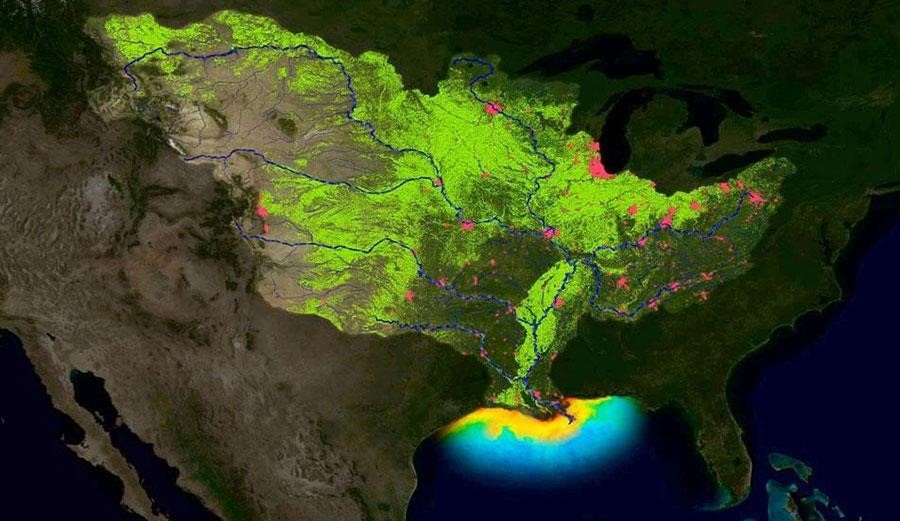Movement of excessive amounts of nitrogen (N) through the Mississippi River Basin (MRB) into the Gulf of Mexico (GOM) has been linked to the annual formation of a Dead Zone, an area of reduced dissolved oxygen (DO) levels in the waters around the river’s mouth. Dead Zone formation has been linked primarily to agricultural practices in the MRB, and altered conditions associated with climate change will likely affect both the movement of N into the GOM and the frequency and extent of conditions that favor the formation of the Dead Zone. Understanding how the changing climate will affect nutrient cycling and conditions in the GOM will be critical if we are to effectively mitigate the impacts of Dead Zone formation. In this unit, you’ll look at the big picture of the Gulf’s Dead Zone and then consider what an individual farmer can do about the problem.

The Problem
The GOM suffers from hypoxia (water containing < 2 mg/L DO) that occurs most frequently during warm months
The worst hypoxia event to date in the Gulf occurred in the summer of 2017, covering 22,729 km2, an area about the size of New Jersey,
The impact of Dead Zone formation on the Gulf’s ecosystem can be devastating
It’s important to stress that, in addition to the environmental impacts that result from N movement into the GOM, the economic toll resulting from hypoxic conditions, including the loss of commercial fisheries and tourism, can also be devastating.
Fertilizers have been identified as being particularly important, (Figure 4.2), with 52% of the N moving into the Gulf estimated to originate from the use of fertilizers on corn and soybean crops alone (Alexander et al. 2008).
Surges in stormwater runoff following spring rains often coincide with the timing of fertilizer application.
The Role of Climate Change
Scientists believe that projected climatic changes will worsen the prevalence and impacts of Dead Zones.
Changes in the frequency and intensity of precipitation events are also linked to increased N runoff.
As atmospheric CO2 levels continue to rise, some crops may increase their productivity, resulting in an increased need for fertilizer application
Increased precipitation projected to occur in the MRB will also lead to increased N loss from soils through leaching.
Solutions
For instance, to tackle this problem at its source, the Gulf of Mexico Hypoxia Task Force has evaluated a wide range of strategies to reduce nutrient pollution, including market-based incentives for wetland restoration, home septic system improvements, planting of cover crops, and better stormwater management
Build Your Foundational Knowledge
Buffer strips:
The multifunctional roles of vegetated strips around and within agricultural fields
Drainage water recycling:
Questions and Answers about Drainage Water Recycling for the Midwest
Constructed wetlands:
Constructed Treatment Wetlands
Solutions
1.3.1 Small Group Guided Worksheets
Additional sources:
Buffer strips: Vegetation Buffer Strips in Agricultural Areas (chisagocountymn.gov)
Constructed wetlands: (PDF) The Use of Constructed Wetlands to Mitigate Pollution from Agricultural Runoff (researchgate.net)
Drainage water recycling: Drainage Water Recycling – Transforming Drainage